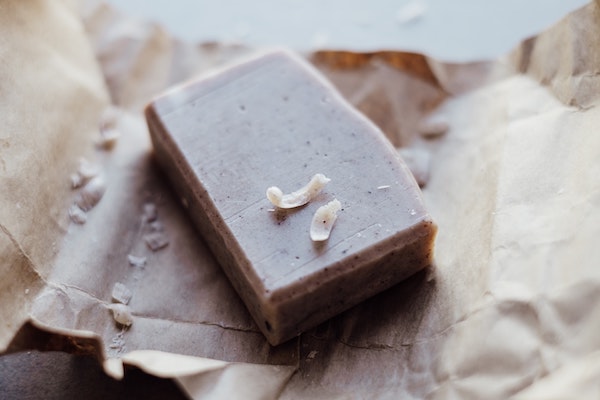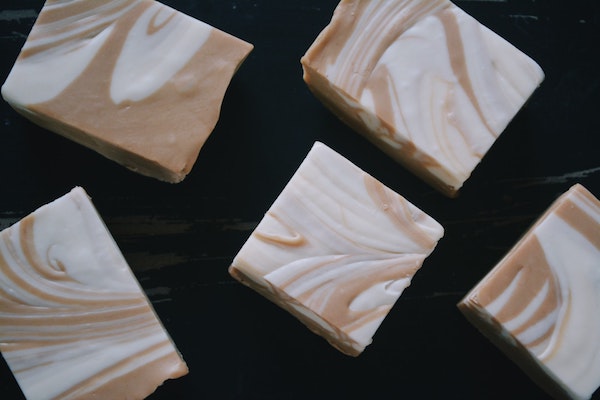If you’re curious about how to make handmade soap, you should know that it’s not so complicated. With a little knowledge, the right tools, and some natural ingredients, you can start making great soap right now.
Handmade soap is a fantastic way to nurture the body. The best thing is that you know exactly what ingredients are in the soap. Commercial soap brands are usually made with multiple components that can dry the skin. Homemade soaps are created with your own customized objective in mind.
Ready to start making handmade soap? Let’s start with a method on how to make it, and then we’ll introduce you to nine recipes all beneficial for your skin. All the ingredients are easy to find and perfect whether you’re a beginner or a more experienced soap creator.
Making Handmade Soap
Because safe is better than sorry please make sure to have the following protective gear when you start cooking your soap: Eye goggles, Gloves, Long-sleeved tops, Pants.
6-Steps to Make Handmade Soaps
1. Select a methodology
If you have never done handmade soap, the most effective way to begin is to melt and pour. The melt and pour methodology consists of mixing the premade soap base, glycerin, and few other ingredients like oils. However the sake of education we will list here four methodologies to make handmade soap:
- Melt and pour: an easy form to make handmade soap. This way requires a premade soap base, so you’re not manufacturing soap from scratch. This method doesn’t require lye, but it demands molds and a double-boiler. This is the methodology we will detail further on.
- Cold and hot process: are both the most familiar forms to make soaps from scratch. Both techniques require lye to work with.
- Melt and pour: an easy form to make handmade soap. This way requires a premade soap base, so you’re not manufacturing soap from scratch. This method doesn’t require lye, but it demands molds and a double-boiler.
- Rebatching: is a terrific way to redo a poor batch of finished homemade soap. It’s the perfect form to recycle the ingredients. Keep in mind, it takes time, patience and usually is a less appealing soap.
If you have never done handmade soap, the most effective way to begin is to melt and pour. The melt and pour system consists of mixing the premade soap base, glycerin, and few other ingredients like oils. You can buy premade soap base at Ubuy Hong Kong.
2. Get tools
For this method, you need:
- A heat-safe container to melt the soap base
- A wire whisk make sure it’s stainless steel to mix the fragrance
- A mixer if you’re willing to incorporate other elements like colorants or powders.
- A measuring cup
- Silicone molds.
3. Prepare the soap base
Usually, the soap base can be melted in the microwave or on a stove in a double boiler over low heat. Melt the soap base slowly. Don’t forget to use protective gear to avoid burns.
4. Add the fragrance
If you’re following a recipe, add the recommended amount of fragrance. If not, then it will take some practice to establish how much fragrance is the perfect quantity. Remove the base from the stove or container with the wire whisk mixed with the fragrance. Make sure to whisk quickly but carefully.
5. Pour the mixture into the molds
Once the soap base and the fragrance are combined, it’s time to pour it into the silicone molds. Keep in mind that soap doesn’t expand upon cooling so that you can fill the molds.
6. Let it cool down
Finally, allow the soap mixture to cool at room temperature. Make sure to place the molds on a flat surface. Once soaps are hardened, unfold the mold and be pleased by your creation!
Below is our selection of handmade soap ingredients which we believe are the most beneficial for your skin.
Great Ingredients for Handmade Soap
Base Oils
1. Avocado Oil
Avocado oil is a rich source of essential nutrients like vitamins A, B, D, and E. It is recommended for those looking to heal and restore the skin. Avocado oil soap is the best option to provide the skin with ointment thanks to its high concentration of fatty acids. Find avocado oil at quality organic retailers such as oGreen.
2. Calendula Oil
Calendula is widely used due to its antifungal, anti-inflammatory, antibacterial, and antiseptic properties. It’s terrific for relieving cuts, calming eczema, and curing diaper rash. Use calendula oil for sensitive skin. People with dry, irritated skin should use calendula oil soap. You can find calendula oil on websotes like Neil Yard’s Remedies, which offers pure essential and base oils among other interesting products.
3. Chamomile Oil
Chamomile oil is an ancient remedy for calming and restoring the body and mind. It has anti-inflammatory properties, and it is a rich source of antioxidants. It’s widely used for its antibacterial characteristics, and it is great for preventing acne and breakouts. Chamomile oil is appropriate for all skin types, even for those people with eczema, sensitivity, and dry skin. A great place to find raw cosmetic materials, essential and base oils is Wing Hing Chemical Co Limited.
Essential Oils
Essential oils are used on handmade soap for their incredible benefits to calm, balance, strength, restore, and energize. They’re achieved from plants and add aroma to homemade soaps.
1. Citronella
Citronella oil is terrific for eliminating germs and fungi from the skin, and it’s used as a remedy for cuts. Besides, it is a potent insect repellent. This oil is excellent for boosting skin health. It moisturizes the skin and can protect the skin and hair from sun exposure. You can find citronella oil at Candles HK.
2. Lavender French
Lavender french oil is one of the most popular essential oils. It supports relaxation and allows your body and mind to ease. This oil is excellent for curing fungal infections, healing eczema, and sunburn. It has antiseptic and anti-inflammatory properties. Lavender French oil is available at Buly 1803 Apothecary located in Central.
3. Lemongrass
Lemongrass is an essential oil native from India. It is famous thanks to its excellent benefits, including purifying the skin. It’s ideal for those with oily skin as it can reduce greasiness and control shine. Besides, it has a delicious aroma, so it’s an excellent option to add to handmade soaps. You can use lemongrass to stop acne breakouts. You can buy lemongrass oil at one of the Muji store in Hong Kong for instance.
Clays, Flowers, Roots, Plants, Spices
You can also add natural ingredients such as flowers, plants, spices, clays, seeds, and roots to create attractive and colourful soaps.
1. Annatto Seeds
You can use annatto seeds to provide a vivid orange colour to your soap. These seeds come from the achiote tree, and it’s one of the best ways to naturally colour handmade soaps. Find annatto seeds at places such as Regency Spices.
2. Dead Sea Mud
Dead sea mud is prevalent to heal several skin issues like psoriasis and inflammation. It is recommended to reduce skin impurities and dead skin cells. People who suffer from acne should add dead sea mud as it kills bacteria. You can find some at Green Gourmet for instance.
3. French Pink Clay
French pink clay is another beneficial ingredient for handmade soap as it cleanses and detoxifies the skin. It removes dead skin cells leaving the skin flawless and younger. It is suitable for every skin type, including sensitive and dry skin. French pink clay is used as a pore-refining treatment. This clay is also known as Kaolin Clay Powder. A great place to buy French Pink Clay is Desert Cart HK.
4. Oat Milk
Oat milk is one of the most popular ingredients for handmade soaps as it is impressive for sensitive and dry skin. It is an abundant source of antioxidants making it the perfect option for protecting the skin from harmful elements. If you want a soap that can make the skin glow, even the skin tone, and prevent fine lines and wrinkles, then you should use oat milk. It has anti-inflammatory properties, so it’s ideal for reducing blemishes and acne.
Bottom Line
That’s it you are ready for your first batch! Again make sure to work in a ventilated area and have all the safety measures to avoid any accident. Start slowly, and remember you can adapt the de amount of drops of basic and essential oils based on your needs. We may as well add, that if your objective is to take care of your skin, adding regularly facial and oil massage treatments to your routine would be very beneficial!


